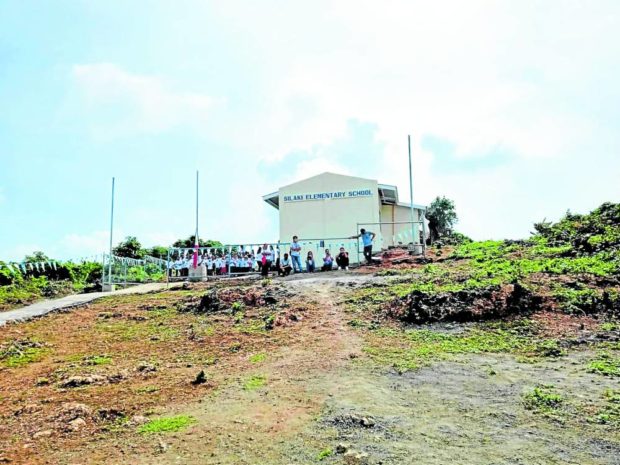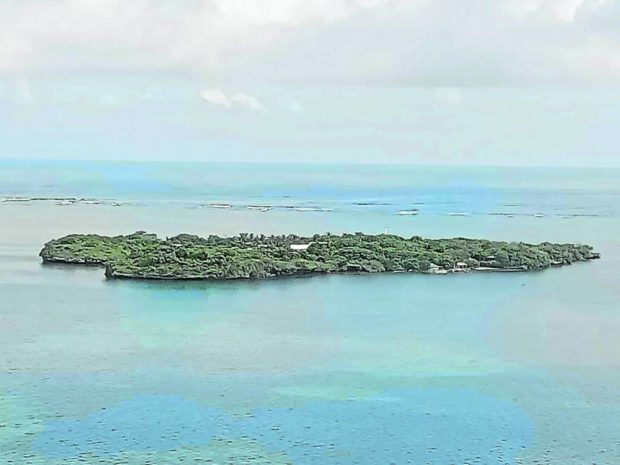No more need to cross the sea for class

THEIR OWN SCHOOL AT LAST | Parents of schoolchildren on Silaki Island (right) have one less worry with the opening of its first school building, which can initially accommodate 40 enrollees. The children here used to travel by boat to Santiago Island just to attend class. —YOLANDA SOTELO
BOLINAO, Pangasinan, Philippines — A school has been built on an island under the jurisdiction of this town, thereby resolving concerns over the safety of schoolchildren there who have to cross by sea to another island during school days.
Inaugurated on Friday and turned over to the authority of the Department of Education, Silaki Elementary School on the island after which it was named will initially accommodate 40 pupils from kindergarten to Grade 6, who used to attend classes at Binabalian Elementary School on Santiago Island, a 30-minute boat ride away from Silaki.
Classified as a sitio, Silaki is home to a fisherfolk population of about 370 and has a distance of 11.5 kilometers from Bolinao as it lies just beyond Lingayen Gulf. Its estimated area is 0.1 square kilometers.
The first-ever school building built there is a modest construction with only two classrooms—even if it cost more than P1 million to build, according to Silaki Mayor Alfonso Celeste.
The few teachers who make up its faculty can still hold other classes at a nearby chapel, said Ely Ubaldo, a school superintendent of the provincial government.
Article continues after this advertisementHowever small this project, the establishment of a school on this dot of an island was still a breakthrough for officials of this province, including Pangasinan Gov. Ramon Guico III who led the school’s inauguration. One official expressed pride that a school was built on an island that was still part of the West Philippine Sea.
Article continues after this advertisementThe building stands on a 300-square-meter lot atop a hill. The family of the late Mariano Celi, a resident of the island, donated the property.
Parents of Silaki’s schoolchildren heaved a collective sigh of relief, now that they have a school much closer to home.

Island in Bolinao, Pangsinan
‘Dream come true’
They said the boat ride to Santiago is already a considerable transportation cost — P10 for each pupil commuting to that island and another P10 to return to Silaki.
“The school on the island is a big help for us, a dream come true,” said Haydee Revilla, 41, who has three kids, all studying.
The housewife said she will be saving P40 a day since her two children in grade school can just attend class in Silaki.
Only the eldest needs to travel to Santiago to attend high school there, Revilla said.
Analiza del Fierro, principal of Binabalian Elementary School, said she was also pleased that many of Silaki’s children no longer have to risk crossing the sea to Santiago.
She said it could not be helped that the schoolchildren sometimes went to class “in their wet clothes,” because of the seawater splashing on them during their boat ride.
Step to progress
For Guico, the new school is a small but significant step to progress for Silaki’s residents.
But they themselves would point out that living on an island is not quite paradise.
According to them, potable water is brought to their sitio from Santiago. They also collect rainwater—when it rains, of course—since there is no source of fresh water on their island. Furthermore, the residents rely on solar panels for their electricity.
Yet Guico has plans for the island’s development because of its “potential for tourism,” he said, citing the giant clams being raised there with the support of the Marine Science Institute of the University of the Philippines. He also committed to build more facilities and even a covered court for Silaki Elementary School.
RELATED STORIES
No place too far for these youth volunteers bringing school supplies, hope to remote communities
School a long walk for Cordillera kids